Sonos BU250 Wireless Digital Music System Review
Sonos BU250 Wireless Digital Music System
The best multi-room digital music system just got better - much better!
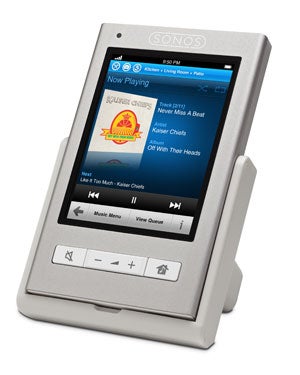
Verdict
Key Specifications
- Review Price: £799.95
About this time last year I reviewed the Sonos BU150 bundle, which brought Sonos’ superb wireless music streaming hardware down to a far more affordable price. Not only was the BU150 bundle more affordable, it also brought improved wireless range to the table with the implementation of MiMo technology, thus making the Sonos wireless mesh network even more robust.
The only slight letdown with the BU150 was that Sonos hadn’t updated its CR100 remote controller. Although the CR100 was still a great unit that allowed you to control music in any room in your house from the palm of your hand, the scroll wheel navigation method was starting to look dated in a world full of touch-screen goodness. I mentioned this to Sonos at the time, and I was told that my observation wasn’t lost on the engineers and designers, and sure enough the BU250 bundle that I’m looking at today ships with the new CR200 touch-screen controller.
In reality the only difference between last year’s BU150 and this year’s BU250 bundle is the CR200, with the two bundled zone players remaining identical. To recap, you get one ZP90 and one ZP120. The ZP90 is a relatively small affair with no internal amplification, so you’re going to need to connect it to a dedicated amp/receiver or a set of active speakers. The ZP120 is larger since it incorporates an amplifier and can simply be hooked up to a set of bookshelf speakers, which it will drive quite effectively.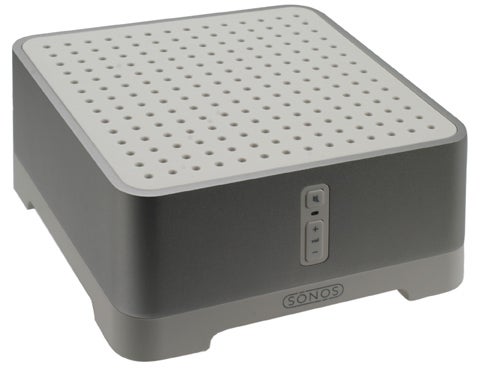
The beauty of the ZP90 is that it comes equipped with both optical and coaxial digital audio outputs. This means that you can bypass the ZP90’s own DAC and use one of your own choosing, whether that be integrated into your amplifier or a stand alone device. For the true audiophile, this is an attractive option. The ZP120 on the other hand, makes for a very simple hi-fi solution, by just adding a pair of speakers. With both ZonePlayers in the box, you can use the ZP90 in your main living room, hooking it up to your hi-fi or AV amplifier, while the ZP120 can go in a secondary room with a dedicated pair of speakers.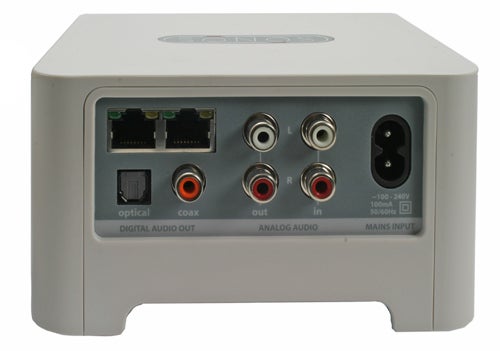
The CR200 brings another addition to the bundle that was missing from the BU150 set. The old CR100 shipped without a docking cradle, leaving you to buy one separately. The new CR200 comes with a docking cradle, thus saving you the cost of buying one, although the overall cost of the bundle itself has risen by £100, which is more than the cost of a cradle. So the question is whether the inclusion of the new CR200 controller justifies the price increase, and I’m inclined to say that it does.
Sonos may have taken its time to launch a touch-screen controller, but it was worth the wait. The CR200 looks superb, in a minimalist kind of way. The handset is dominated by the 3.5in capacitive touch-screen, but below the screen are some hardware buttons. The buttons in question are up/down volume, mute and a shortcut to the Zone menu. It’s a smart move putting these key controls onto hardware buttons, allowing you to, for example, mute the music without the need to navigate any menus – ideal if the phone rings.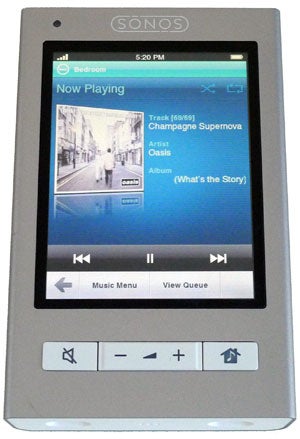
The CR200 is around half the size of the outgoing CR100, while the screen is in a completely different league. Putting the touch functionality to one side for a moment, the screen on the CR200 is not only far larger than on the CR100, but is also of a far, far higher quality. You’re getting a full VGA 640 x 480 resolution for a start, so everything looks pin sharp. Add to that the fact that Sonos has implemented an LED backlight system for the CR200, so colours are rich and vibrant, making images on the CR100 look pale and washed out by comparison. The screen is also transflective, so if you’re using it out in the garden in bright sunlight, you’ll still be able to see it clearly. Oh, and there’s also an ambient light sensor, so the level of backlighting can be adjusted accordingly.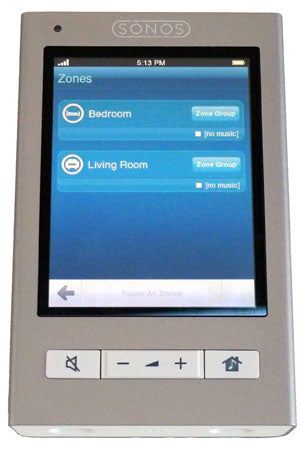
Using the CR200 is an absolute joy. The capacitive nature of the screen makes finger operation a breeze. Scrolling through lists has that lovely inertia effect that was pioneered on the iPhone and copied badly by so many other devices, CR200 excepted. And if you have a particularly long list of artists, songs or albums, you can scroll through the alphabet located on the right hand edge of the screen and just jump straight to the required letter. Again this is something first seen on the iPhone, but it works just as beautifully on the CR200.
Searching for artists or tracks is infinitely easier than it was on the CR100, since now you can simply type in what you’re looking for using the virtual keyboard. The virtual keyboard is a good one too, with keys large enough to facilitate accurate inputs even when typing quickly. You also get a very swift auto-complete feature, so if I search my music library for Pearl Jam, I only need to type “Pe” before the CR200 returns the result I’m looking for. 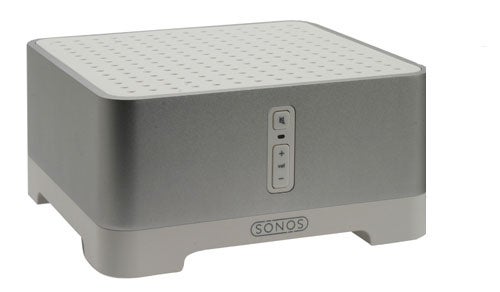
Since the CR200 is so much smaller than its predecessor, it’s easy to hold and use the device with one hand – something that simply wasn’t possible with the CR100. The rubberised back means that you’ve always got a good grip on the device, and also makes it quite secure when it’s placed on a table or worktop – if you have cats as naughty as mine, you’ll know how important it is for expensive gadgets to not slide off tables too easily.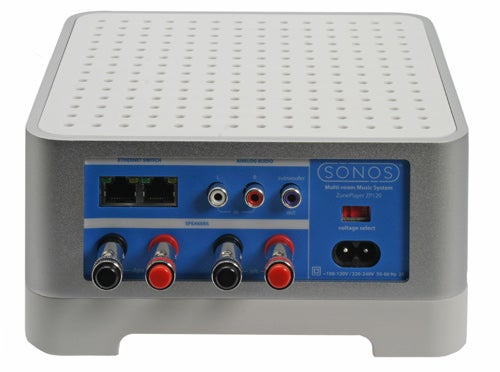
As with the CR100, the CR200 has a motion sensor, so as soon as you pick it up, it will spring to life. However, unlike the CR100, you can also wake up the CR200 by tapping the screen, effectively allowing you to control the device while it’s sitting in its cradle. And since the cradle is quite solid, with a rubber base, it won’t slide across the table if you do choose to use the controller while it’s docked. It’s also worth noting that the CR200 has a user-replaceable battery pack, unlike the old controller, with new batteries costing around £30.
I did mention to Sonos that it would be great if the CR200 had been a universal remote control as well, but of course it doesn’t use infrared like most remotes. However, most CE manufacturers are adding wired or wireless network functionality to their products these days, so hopefully the next step would be control using IP rather than IR, and if that happens the CR200 could be the only controller you need.
Strange as it may seem, many potential buyers won’t be comparing the CR200 to the outgoing CR100. Instead they will be comparing the new CR200 to an iPod touch or iPhone. At the end of last year Sonos launched an app that allowed iPhone and iPod touch users to control their Sonos system without the need for a dedicated remote. The Sonos iPhone app is generally brilliant, and gives you access to almost all the functionality on a device that you may already have, but I’m not convinced that this is a viable alternative to a dedicated controller.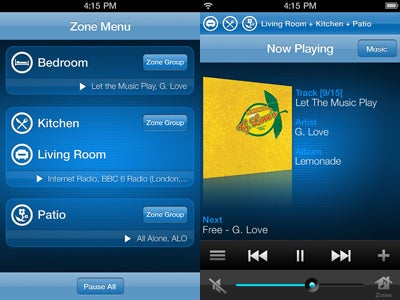 ”’(centre)The iPhone app gives you control of your Sonos system, but a dedicated controller still has the edge(/centre)”’
”’(centre)The iPhone app gives you control of your Sonos system, but a dedicated controller still has the edge(/centre)”’
The biggest problem with using an iPhone instead of the CR200 is the length of time it takes to get anything done. Remember that example I gave earlier about wanting to mute your music when the phone rings? Well, if I was using my iPhone I would have to turn it on, enter the lock code, swipe the screen to the page where the Sonos app lives, start the Sonos app, wait patiently while it loads, then hit mute! Using an iPhone 3G running firmware 3.0 I found that it took around 20 seconds to access my Sonos system, as opposed to, well no time at all using the CR200. And then consider the fact that it could be your iPhone that’s ringing in the first place!
Another problem with relying solely on the iPhone app is that I take my iPhone with me wherever I go. So, if I go out for the day, that means that my wife has no way of controlling the Sonos system, rendering it pretty useless – unless she wants to fire up her notebook. 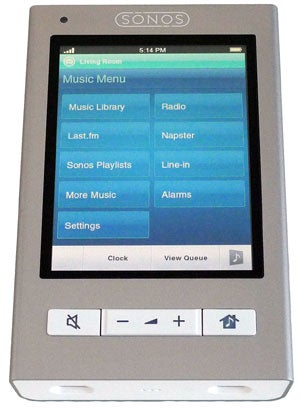
Oh, and let’s not forget that your iPhone or iPod touch needs to use your standard Wi-Fi network to be able to control your Sonos system. So, if you happen to have a large house and your wireless router is at the opposite end of it, you’ll have trouble connecting with your iPhone. The CR200 connects directly to the Sonos mesh network, which means that it just needs to be in range of a ZonePlayer, which will most likely be in the same room.
Don’t get me wrong though, I’m not suggesting that the Sonos iPhone app isn’t worth having, because it most definitely is. I use it regularly when I’m up in my bedroom and the CR200 is downstairs in my dining room. All I’m saying is that the iPhone app makes a great secondary controller rather than a primary one.
Setting up a Sonos system is as simple as ever. You just place your ZonePlayers where you want them, hook one ZonePlayer or an optional ZoneBridge to your router and you’re pretty much done. From then all the configuration can be done via your PC using the Sonos Desktop application, which makes configuring the zones and your own music library as easy as pie. Once you point the Sonos system at your music – in my case it resides on my NAS appliance – it will build your Sonos Music Library and separate it into the usual listings of Artist, Albums, Playlists etc.
You can also access music that you don’t own via a few different methods. You can tune into any number of Internet radio stations if you wish, but having to sit through loads of mind numbing drivel from DJs and strings of adverts every few minutes isn’t what I want from my multi-room digital music system. Luckily you can also access digital music services like Last.fm and Napster. 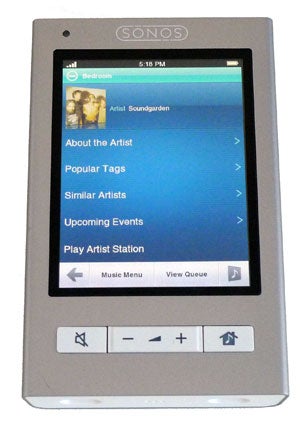
I’m not the biggest fan of Last.fm, since it doesn’t actually allow you to choose what music you want to listen to. Instead you decide what type of music you’d like to hear, and Last.fm will stream you a selection that it thinks suits your genre. Even if you select a certain artist, what you’ll get is a stream of tracks that Last.fm deems are “similar” to that artist. To be fair, Last.fm is a good way to discover new music from artists that you may never have heard of before, and if you’re after a bit of background music that you’ve not heard a hundred times already it’s great. It’s also free, which in itself is pretty compelling.
Last.fm also highlights a new feature on CR200 – the Info button. This will give you information about the band or artist that you’ve selected in the form of background information and lists of upcoming events, such as concert dates. 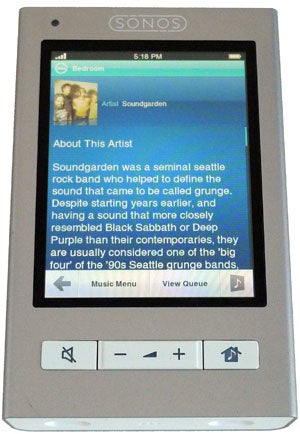
For me though, Napster wins every time. Ok, so Napster will cost you £9.99 per month, but coupled with a Sonos install, it’s worth every penny. Basically, that monthly subscription gives you access to Napster’s huge library of music, and you can stream as many tracks as you like, as often as you like, using any method that you like. The other great thing about Napster is that you can create playlists that are accessible from anywhere that you can access the service. So if I create a playlist on my PC at work, I can listen to it on my Sonos system when I get home, or on my notebook when I’m working in a hotel room in San Francisco. Also, as with Last.fm, Napster gives you the opportunity to experience new music and if you really like something, you can then buy the CD and add it to your own music library – something that I do regularly.
Whether you choose to subscribe to Napster, like to use Last.fm, enjoy listening to Internet radio or just want to kick back and listen to your own, personal music library, Sonos makes the whole experience just so much better. It’s hard to describe if you haven’t used a system like this, but being able to just lay on your bed or sofa and have all your music in the palm of your hand is, quite simply wonderful.
As has always been the case with Sonos, the sound quality is primarily dependant on the quality of your digital library. If you rip everything in a lossless format and output it digitally from a ZP90 to a high quality DAC and amplifier it should sound pretty much perfect. However, that doesn’t mean that compressed music doesn’t sound good if it’s ripped at a reasonable bit rate. Even the amplified ZP120 produces decent sound as long as you don’t skimp on the speakers. 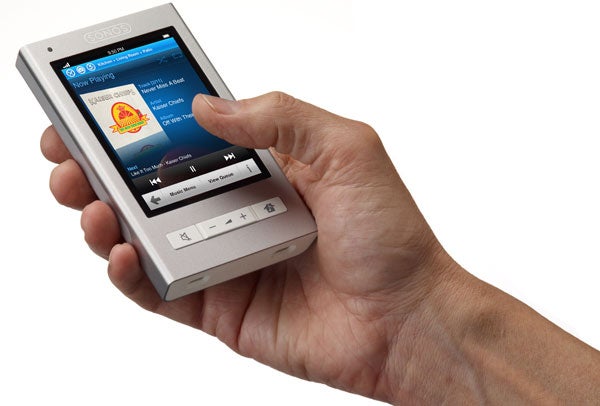
At £799 the BU250 bundle isn’t what you’d call cheap, but you are getting a lot of very good technology for that money, including one of the best wireless controllers I’ve ever come across. It’s also worth remembering that the kind of functionality that a Sonos system gives you can only really be compared to a proper custom audio install, which would set you back far, far more. And even then, the combination of dedicated controller, iPhone app and PC desktop controller make Sonos arguably more versatile than many custom installs.
”’Verdict”’
The Sonos BU250 bundle may be £100 more than last year’s BU150, but it’s worth it. The new controller is an absolute gem, and shows that Sonos has taken its time to produce something special rather than jumping on the touch-screen bandwagon too early. Everything that was great about a Sonos system still stands, but all those features are just easier to use with the CR200.
Trusted Score
Score in detail
-
Value 8
-
Features 10
-
Design 9

